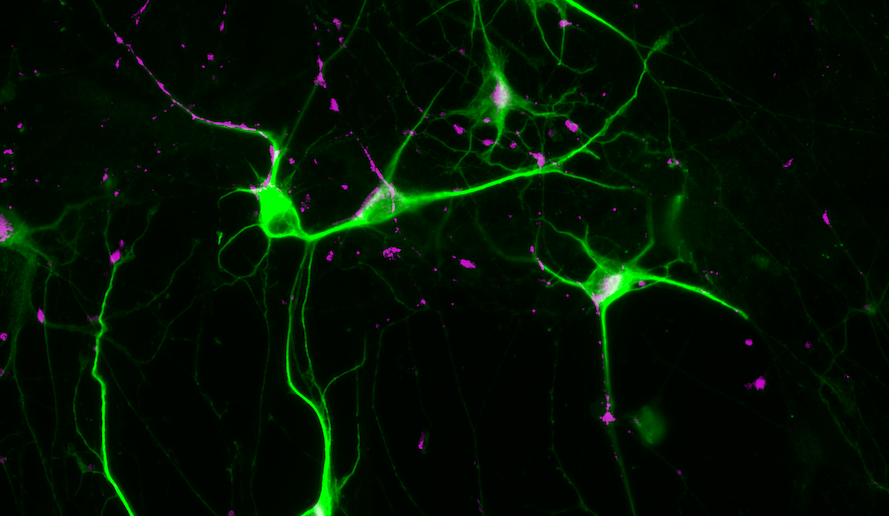Schizophrenia is characterized by auditory and visual hallucinations, delusions, and trouble with forming and sorting thoughts, which severely impacts productivity and overall quality of life. The disease, which affects roughly one percent of the general population, has strong genetic associations, however the exact genes involved are unknown.
Patients with schizophrenia can be treated with antipsychotics, however those drugs only address “positive symptoms,” such as hallucinations and delusions, and neglect to treat cognitive symptoms such as thought disorder. Despite the availability of antipsychotics, only some patients will respond to them and the development of new treatments has been met with challenges, according to Penzes.
“This has been hampered by the fact that studies in animal models, such as mice, do not translate well to humans. In other words, some new drugs may work well in experimental animal studies, but fail when taken into human clinical trials,” said Penzes, who is also a professor of Neuroscience, of Pharmacology and director of the Center for Autism and Neurodevelopment.
A potential solution to developing new therapies for schizophrenia is induced pluripotent stem cells (iPSCs), cells derived from a patient’s blood or skin that can be reprogrammed to be any type of cell in the body, including neurons.
In the current study, the investigators created iSPC-derived neurons from two patients with a rare form of schizophrenia containing the “16p11.2 duplication” mutation, which increases the risk of developing schizophrenia by sixteenfold, and three healthy patients. Neuronal cell lines were grown in Penzes’ laboratory for seven weeks until complete neuronal networks were formed.

Representative image of neuronal markers MAP2 (green) and Syn1 (magenta) stained in induced excitatory neurons. Courtesy of Euan Parnell, PhD.
Using multiple advanced techniques including calcium imaging microscopy, high throughput electrophysiology and RNA sequencing, the investigators found that calcium signaling — when neurons communicate using calcium ions to promote cellular signaling and other essential intracellular functions — functions abnormally in the brain cells of patients with schizophrenia when compared to healthy neurons.
According to Penzes, next steps will involve using these iSPC-derived neurons to screen for novel drugs to treat this genetic form of schizophrenia. If successful, the drugs may be useful to treat patients with schizophrenia in general and other neurological disorders.
“The 16p11.2 mutation is also a prominent risk factor for autism; hence such drugs could also then be tested for treating autism,” Penzes said.
Euan Parnell, PhD, research assistant professor of Neuroscience, and Lorenza Culotta, PhD, a former postdoctoral fellow in the Penzes laboratory, were co-first authors of the study.
Co-authors include Marc Forrest, PhD, research assistant professor of Neuroscience, and Evangelos Kiskinis, PhD, assistant professor in the Ken and Ruth Davee Department of Neurology’s Division of Neuromuscular Disease and of Neuroscience.
This work was funded by the National Institute of Mental Health grant R01NS114977.
By Melissa Rohman
news.feinberg.northwestern.edu


